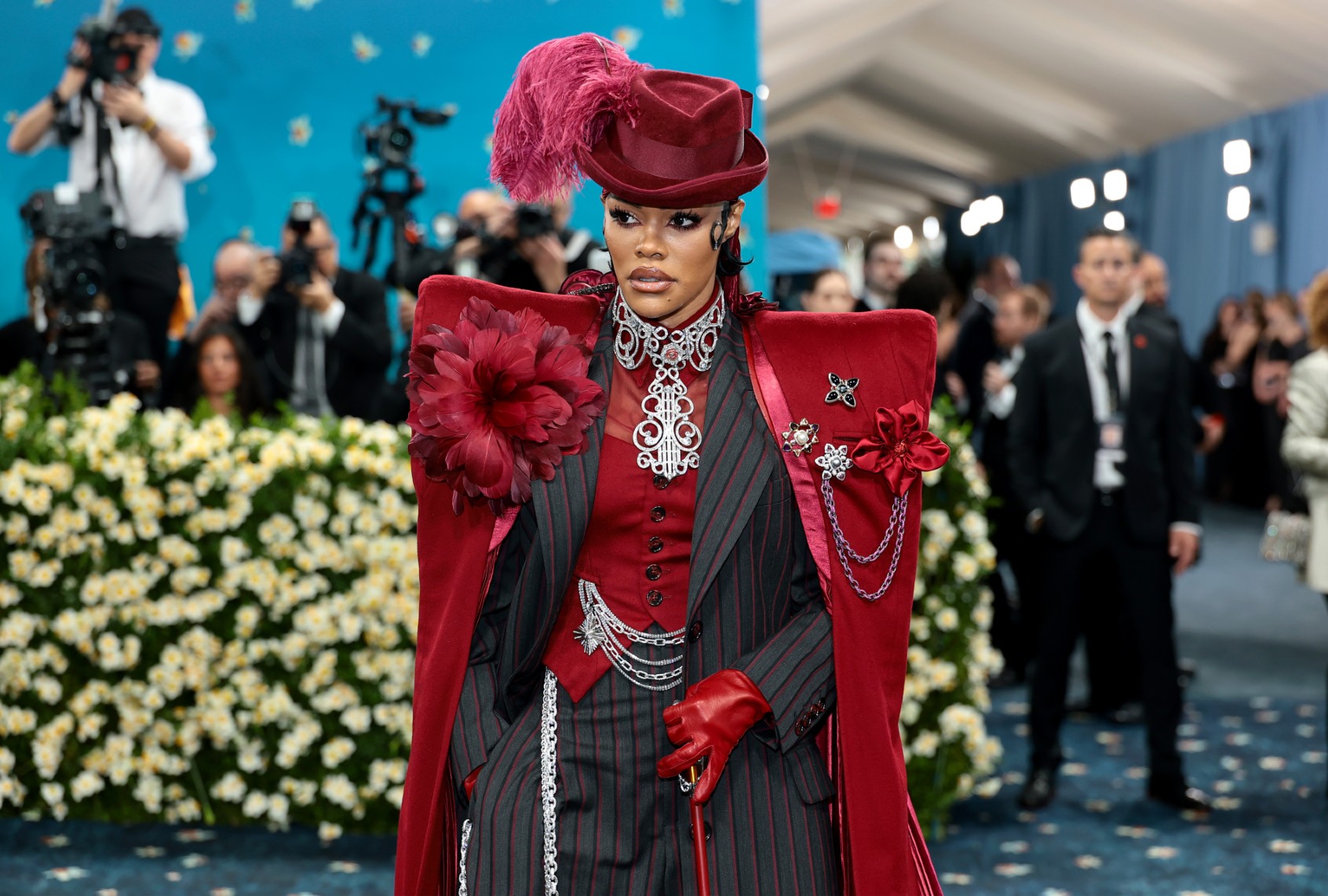The words “Met Gala” don’t exactly sparkle with the same sheen of glamour and mystique that they once did, at least not in 2025. Not long ago, the annual fundraising event for New York’s Metropolitan Museum of Art Costume Institute implied style and showstopping pageantry. During the two Obama administrations, the event was largely off the radar to most people outside the fashion world. But the proliferation of social media stan culture, which exploded in the mid-2010s, upped the stakes. The gala’s celebrity attendees were watched with intense scrutiny from the moment they left the doors of Manhattan’s swanky Carlyle or Mark hotels until the second they finished ascending the carpeted steps of the Met’s famous steps and disappeared into the museum.
Even the constant chaos of the first Trump administration couldn’t dampen the party. In such unprecedented times — aka, a moment in history when the words “unprecedented times” had never been used more frequently — the Met Gala felt like a welcome distraction. The one-two punch of 2018’s “Heavenly Bodies: Fashion and the Catholic Imagination” and 2019’s “Camp: Notes on Fashion” themes was perfect counter-programming to the daily news. The gala put imagination back into the hands of the public, even if it was being handed down from the elite to all of us watching at home, eating takeout while picking at the holes in our socks.
This year’s Met Gala demands a critical look at the institutions it props up. But its theme also deserves legitimate introspection. The Met Gala is not a perfect establishment, but by refuting it entirely, its critics are no better than the artless, ahistorical fascists they purport to abhor.
But now, the Met Gala feels … different. To say the last few years have lifted the veil off the public consciousness would be an understatement. And though the celebration has long had its share of questionable themes and even more questionable guests, in times of postmodern MAGA conservatism, it feels like a party where Gotham City bigwigs would be held hostage by the Joker. The event saw its share of critics in the days leading up to 2025’s first Monday in May, who derided such a lavish display of wealth and power in the face of mass ICE deportations, crippling tariffs and having to look at Elon Musk’s bloated visage every waking minute of the day. Those are understandable, worthy complaints. But with this year’s bewitching Met Gala theme and exhibition, and all it stands to do for emerging Black creatives and artists, as well as for the millions of people gawking at the looks on the red carpet at home, there’s more nuance that needs to be considered. This year’s Met Gala demands a critical look at the institutions it props up, yes, but its theme also deserves legitimate introspection. The Met Gala is not a perfect establishment, but that doesn’t mean it’s worth refuting entirely. By doing that, its critics are no better than the artless, ahistorical fascists they purport to abhor.
The theme for this year’s Met Gala corresponded with the new exhibition opening at the Met’s Costume Institute: “Superfine: Tailoring Black Style.” The show explores the Black dandy, an evolving look in Black sartorial history; both retro and contemporary, that displays affection for menswear, excellent tailoring and a consistent fondness for tasteful flamboyance and whimsy. The exhibition is inspired by Monica L. Miller’s 2009 book, “Slaves to Fashion: Black Dandyism and the Styling of Black Diasporic Identity." Miller is a guest curator for the show and worked alongside the Met’s longtime curator, Andrew Bolton, to put on a spectacular display worthy of the Black dandy’s extensive history.
“Fashion and dress have been used in a contest of power and aesthetics for Black people from the time of enslavement to today,” Miller said in a video for “Vogue” when the show was first announced. “Dandyism has often been used by individuals to manipulate the relationship between clothing, identity and power . . . Historically, the term ‘dandy’ was used to describe someone, often a man, who is extremely devoted to aesthetics and approached it as a lifestyle. Dandyism has been used to think positively about Black people, their ambitions and aspirations. And negatively about those very same aspirations.”
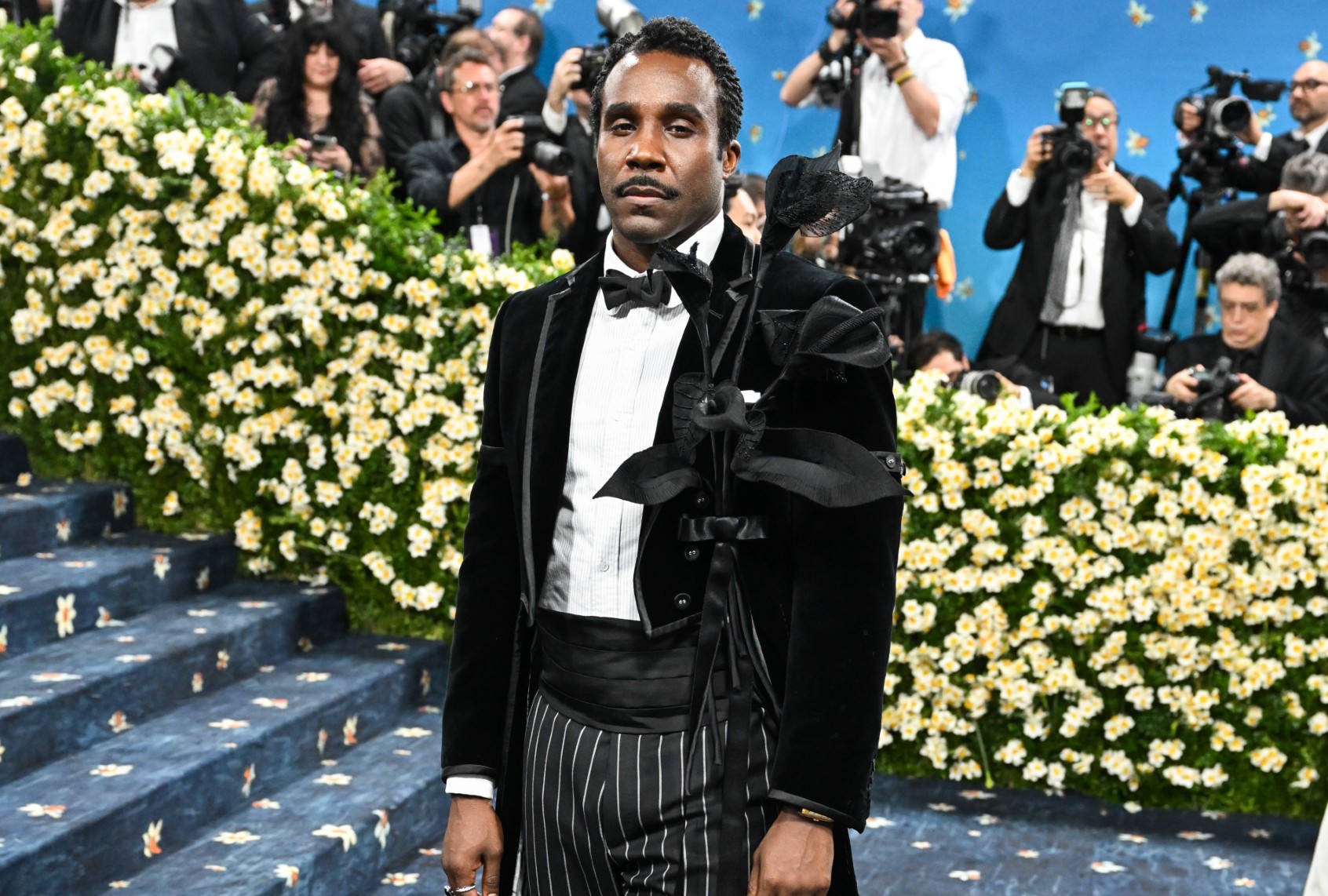 Tramell Tillman at The 2025 Met Gala Celebrating "Superfine: Tailoring Black Style" held at the Metropolitan Museum of Art on May 05, 2025 in New York, New York. (Gilbert Flores/Variety via Getty Images)
Tramell Tillman at The 2025 Met Gala Celebrating "Superfine: Tailoring Black Style" held at the Metropolitan Museum of Art on May 05, 2025 in New York, New York. (Gilbert Flores/Variety via Getty Images)
“Dandyism was imposed on Black men in Europe during the 1700s, as the Atlantic slave trade created a trend in fashionably dressed, or dandified, servants,” Miller continues. “Free and enslaved Black people came to understand the power of clothing and style, and signaling hierarchies of race, class and gender. Over time, dandyism gave Black men and women to use clothing, gesture, irony and wit to transform their identities and imagine new ways of embodying political and social possibilities.”
“Superfine: Tailoring Black Style” is the first exhibition in the history of the Met Gala to feature a Black fashion tradition. That fact is galling considering the gala’s 77-year history and is incredibly relevant to a moment when Trump, his cabinet, and businesses affected by the government are scaling back diversity, equality and inclusion policies. Miller’s book on Black dandyism was published long before a Trump presidency ever felt like a conceivable thought, and the show was announced in October 2024, when it seemed as though Kamala Harris still had a fighting chance at the incumbent presidency. In a snark-filled op-ed for the Daily Beast, the site’s Chief Creative and Content Officer Joanna Coles evoked DEI initiatives, implying that the theme was chosen by Bolton, Vogue Editor-in-Chief Anna Wintour and the Met’s director for brownie points in what they thought would be a sure win for Harris. Coles mentions an irony in this, seeing as though “Vogue” has a historical lack of representation and support for Black designers and talent and has seldom featured Black designers and Black talent on its cover, a tainted legacy that the magazine has been trying to rectify since the summer of 2020, to varied success.
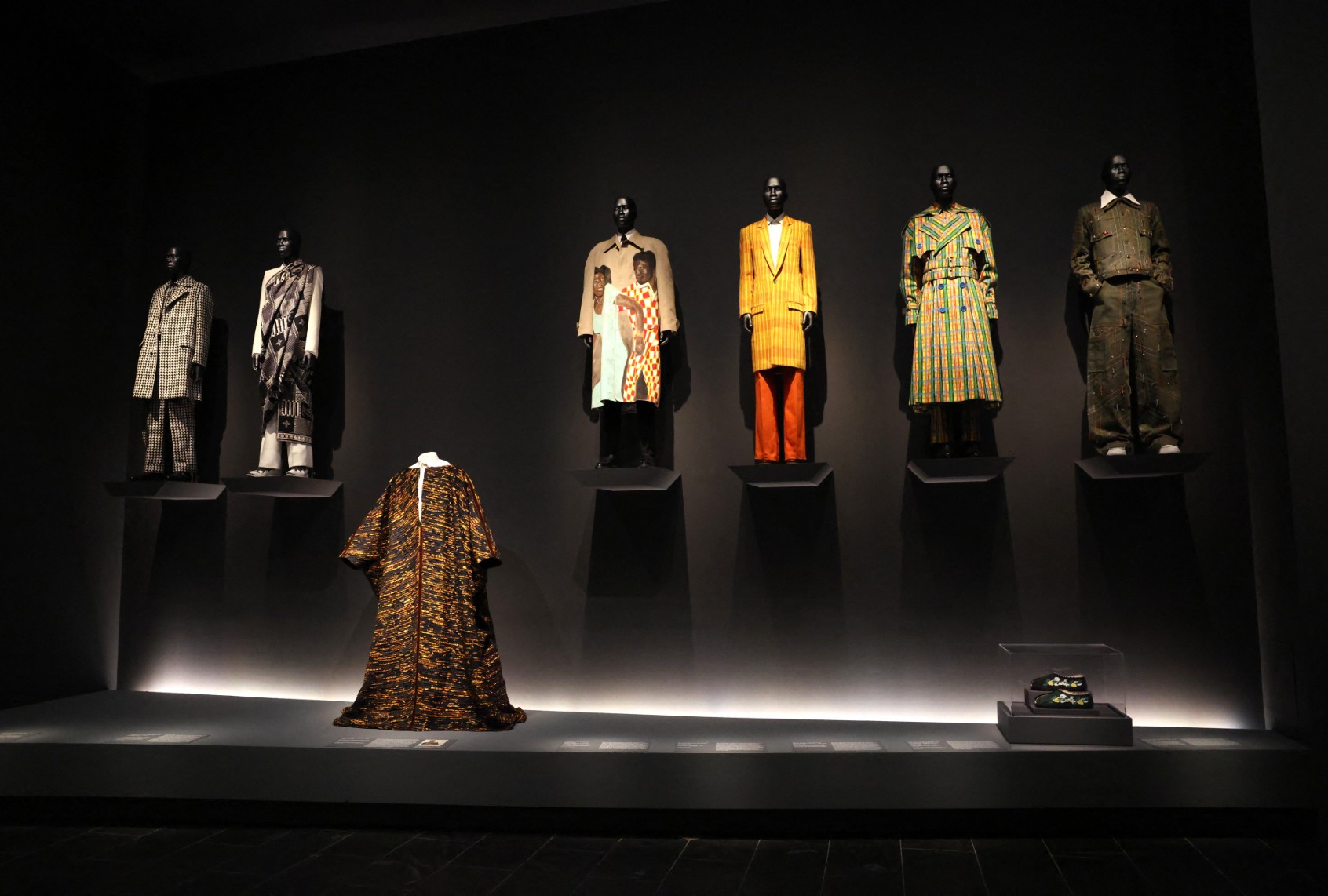 Different designs are seen during the press preview of The Costume Institute's exhibition "Superfine: Tailoring Black Style" at The Metropolitan Museum of Art in New York, May 5, 2025. (TIMOTHY A. CLARY/AFP via Getty Images)While Coles has a salient point, she and other vocal detractors like Kennedy heir and infamous chronic poster Jack Schlossberg — who called for a boycott, saying in an Instagram Reel, “It’s not the time for a party like that” — are actively overlooking the massive historical significance and cultural importance of this year’s gala and exhibition. In a year like 2025, “Superfine: Tailoring Black Style” is not just another show at the Costume Institute; it’s a political statement. While the show’s curators couldn’t have known how the American presidential election would turn out, the exhibition would’ve been one of the most significant and essential in the museum’s history either way. Had Harris won, it would’ve continued the celebration of America having its first Black woman president, and examined how far the country has come (and the obstacles we still have yet to clear). With Trump in office, this exhibition and the Met Gala demand that spectators analyze and appreciate the tenacity of the human spirit.
Different designs are seen during the press preview of The Costume Institute's exhibition "Superfine: Tailoring Black Style" at The Metropolitan Museum of Art in New York, May 5, 2025. (TIMOTHY A. CLARY/AFP via Getty Images)While Coles has a salient point, she and other vocal detractors like Kennedy heir and infamous chronic poster Jack Schlossberg — who called for a boycott, saying in an Instagram Reel, “It’s not the time for a party like that” — are actively overlooking the massive historical significance and cultural importance of this year’s gala and exhibition. In a year like 2025, “Superfine: Tailoring Black Style” is not just another show at the Costume Institute; it’s a political statement. While the show’s curators couldn’t have known how the American presidential election would turn out, the exhibition would’ve been one of the most significant and essential in the museum’s history either way. Had Harris won, it would’ve continued the celebration of America having its first Black woman president, and examined how far the country has come (and the obstacles we still have yet to clear). With Trump in office, this exhibition and the Met Gala demand that spectators analyze and appreciate the tenacity of the human spirit.
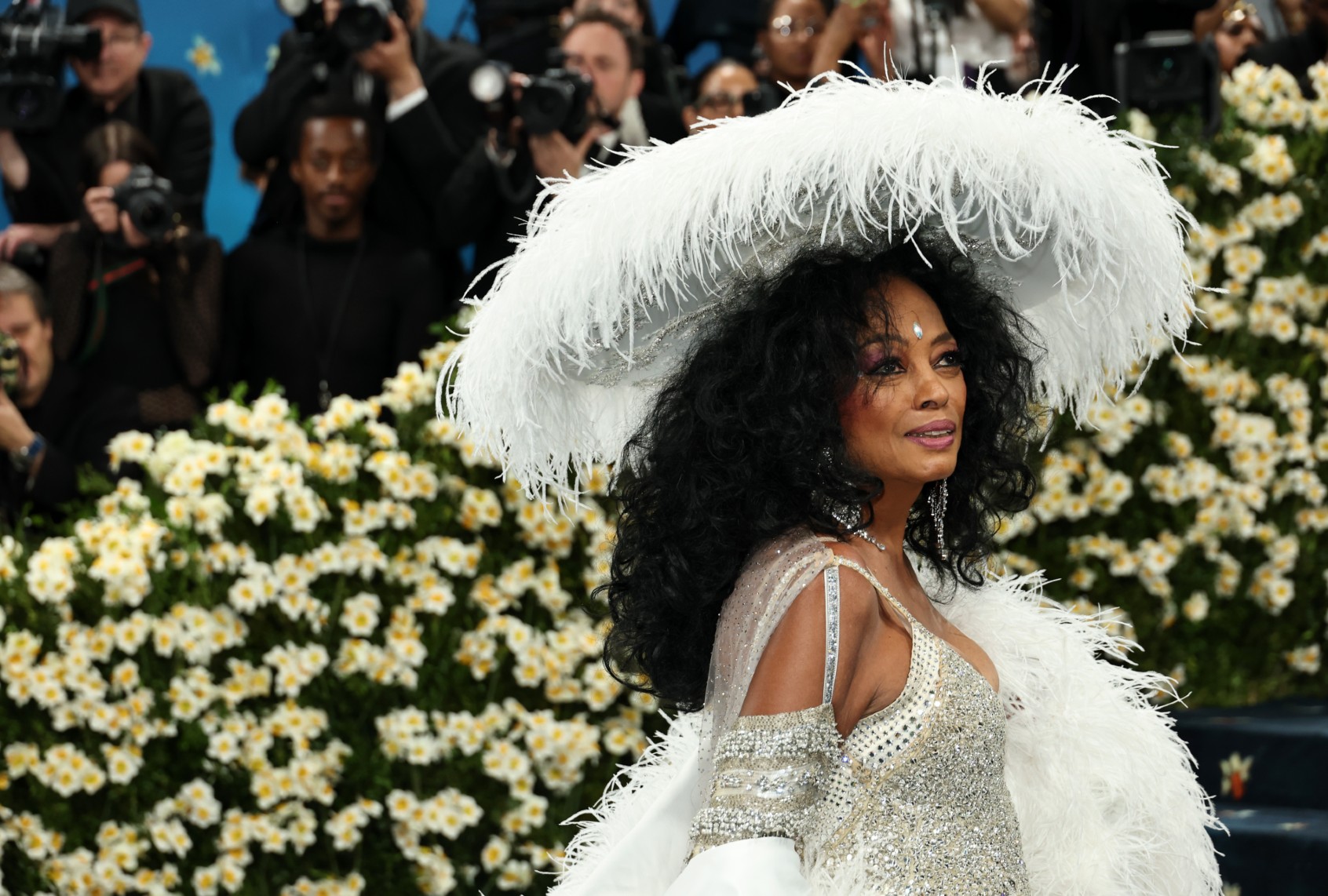 Diana Ross attends the 2025 Met Gala Celebrating "Superfine: Tailoring Black Style" at Metropolitan Museum of Art on May 05, 2025 in New York City. (Jamie McCarthy/Getty Images
Diana Ross attends the 2025 Met Gala Celebrating "Superfine: Tailoring Black Style" at Metropolitan Museum of Art on May 05, 2025 in New York City. (Jamie McCarthy/Getty Images
The exhibition is divided into 12 conceptual sections: ownership, presence, distinction, disguise, freedom, champion, respectability, jook, heritage, beauty, cool and cosmopolitanism. Each section evaluates how clothing and dress have adapted for Black people over the last 300 years. Dandyism began as a point of mockery for enslaved people, and its reclamation and transformation over time is both a revelry for Black style and a sartorial form of historical observance. “To be a Black dandy and live in a world that profits from your subjugation is to be a trickster,” culture writer Taylor Crumpton said in a piece for Capital B. “The Black dandy is a Br’er Rabbit in a tailored suit and tie with a top hat. Only a Black dandy could turn the Met Gala into a celebration of Blackness.”
The Black dandy look is versatile and exquisite, with thoughtful tailoring that Gala guests showed off during the striking red carpet arrivals. The Met Gala’s official dress code was “Tailored for You,” which “Vogue” said was “purposefully designed to provide guidance and invite creative interpretation.” And interpret is exactly what guests did. Unlike recent years, where many guests had trouble deciphering a unique take on the theme, menswear and fine tailoring allowed guests to play and explore. The gala gave viewers a hefty dose of history wrapped in sartorial magic.
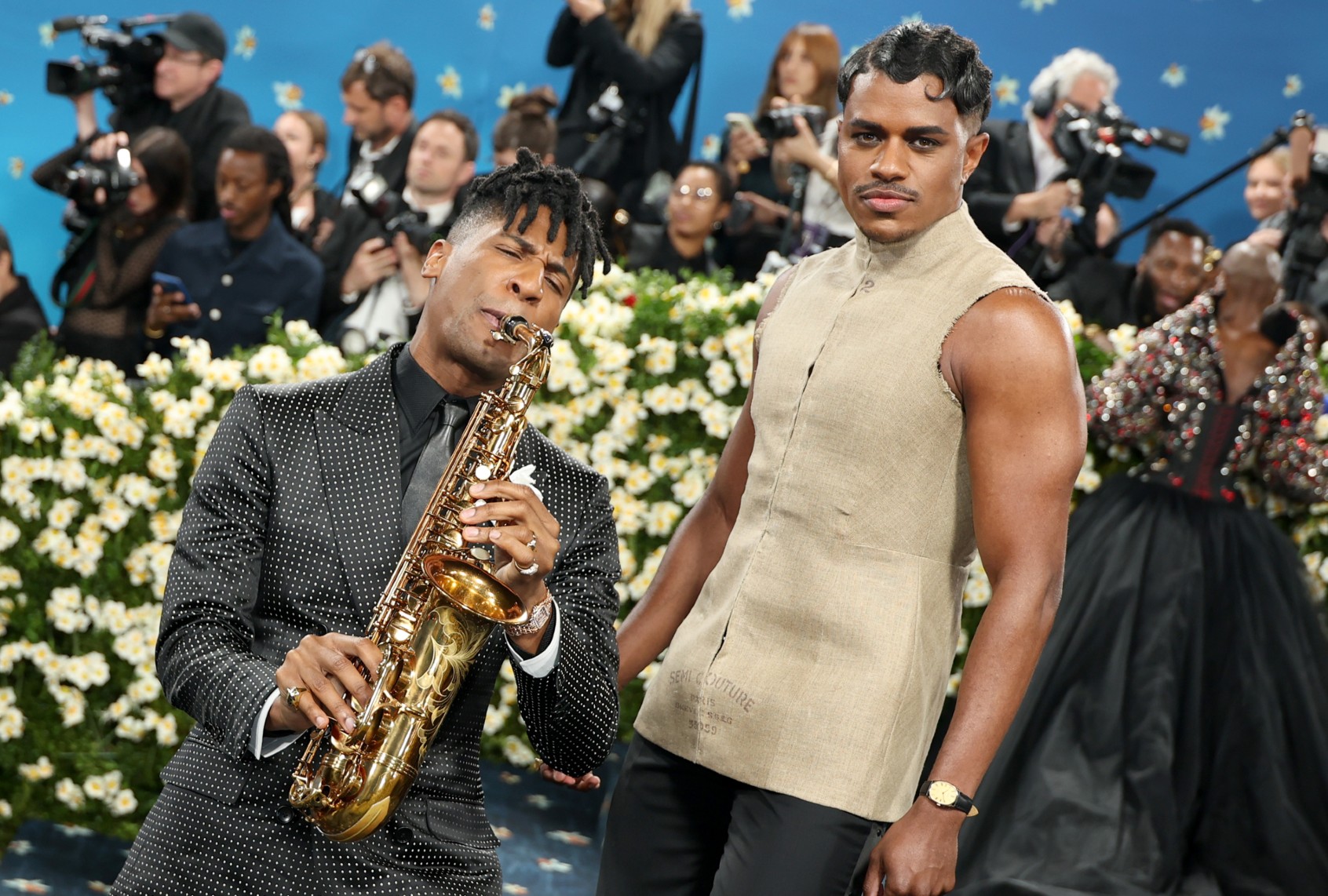 (L-R) Jon Batiste and Jeremy Pope attend the 2025 Met Gala Celebrating "Superfine: Tailoring Black Style" at Metropolitan Museum of Art on May 05, 2025 in New York City. (Michael Loccisano/GA/The Hollywood Reporter via Getty Images)“Severance” star Tramell Tillman was jaw-droppingly gorgeous in a finely tailored suit with lovely pinstripe detailing. Actress and musician Teyana Taylor scored one of the Gala’s best looks early in the night, with a dandified look that took pleating and accessories to the next level. Diana Ross returned to the event after 22 years with a show-stopping gown embroidered with her family’s names on its feathered train. Senegalese influencer Khaby Lame took pocket watch finery to stunning heights. Actor Jeremy Pope wore a beautifully constructed Maison Margiela bodice, which fashion theorist Rian Phin noted was aligned with Miller’s writing about “reconstruction of identity through fashion.” And those looks are just skimming the surface. It was one of the most memorably dressed Met Galas in recent years. Though, frankly, it would’ve been nice to see fewer white stars of the moment like Sabrina Carpenter and even more Black icons and emerging talent, given the young designers prominently featured in the exhibition. Was the “Sinners” press tour too booked to get any of its stars on the carpet? (Yes, I realize I sound like Bradley Whitford in “Get Out,” saying he would’ve voted for Obama a third time if he could.)
(L-R) Jon Batiste and Jeremy Pope attend the 2025 Met Gala Celebrating "Superfine: Tailoring Black Style" at Metropolitan Museum of Art on May 05, 2025 in New York City. (Michael Loccisano/GA/The Hollywood Reporter via Getty Images)“Severance” star Tramell Tillman was jaw-droppingly gorgeous in a finely tailored suit with lovely pinstripe detailing. Actress and musician Teyana Taylor scored one of the Gala’s best looks early in the night, with a dandified look that took pleating and accessories to the next level. Diana Ross returned to the event after 22 years with a show-stopping gown embroidered with her family’s names on its feathered train. Senegalese influencer Khaby Lame took pocket watch finery to stunning heights. Actor Jeremy Pope wore a beautifully constructed Maison Margiela bodice, which fashion theorist Rian Phin noted was aligned with Miller’s writing about “reconstruction of identity through fashion.” And those looks are just skimming the surface. It was one of the most memorably dressed Met Galas in recent years. Though, frankly, it would’ve been nice to see fewer white stars of the moment like Sabrina Carpenter and even more Black icons and emerging talent, given the young designers prominently featured in the exhibition. Was the “Sinners” press tour too booked to get any of its stars on the carpet? (Yes, I realize I sound like Bradley Whitford in “Get Out,” saying he would’ve voted for Obama a third time if he could.)
This Met Gala is a celebration of Black style and transformation, of the wit and pain that are equal parts of reclamation, when the politically powerful are actively deprioritizing and erasing those opportunities. There is joy to be found in such a spectacle. That reserve needs to be consistently refilled, lest we find it depleted.
Despite all the stunning displays, however, one nagging coincidence shadowed the event. The same day of the Met Gala, Sean “Diddy” Combs began his trial for sex trafficking, also in New York City. Critics noted that Combs was previously a Met Gala staple, even someone who heavily influenced Black style. The trial and the Met Gala happening on the same day is a cosmic paradox that cannot be ignored, one that points back to the gala’s history of propping up figures like Harvey Weinstein, who are long-rumored to be vile people but remain protected by the institutions that serve them until the evidence becomes damning enough not to be ignored. No, the Met Gala is not a perfect event, and just because this year’s theme honors Black fashion significance doesn’t mean that the powers behind it won’t make major blunders in the future.
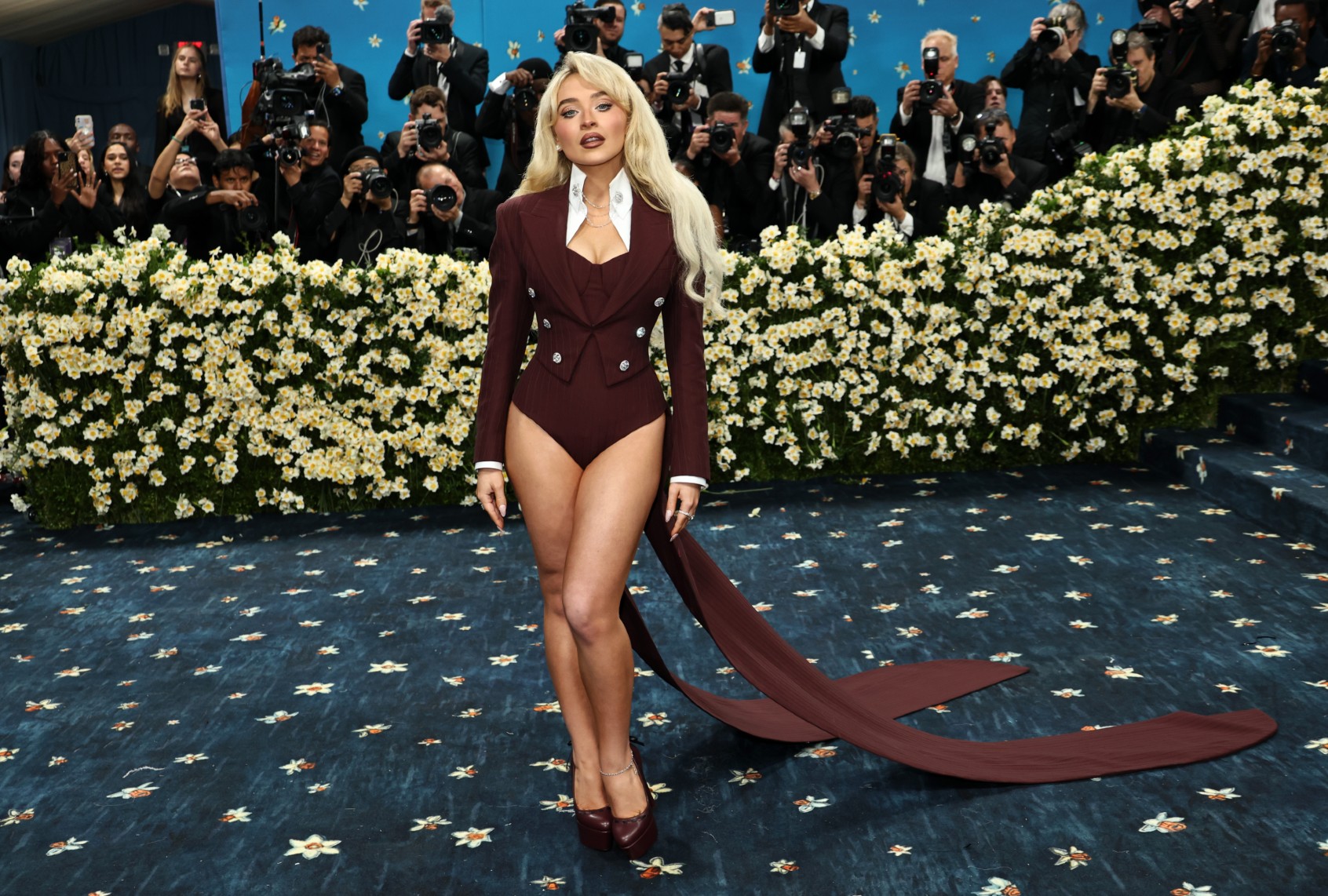 Sabrina Carpenter attends the 2025 Met Gala Celebrating "Superfine: Tailoring Black Style" at Metropolitan Museum of Art on May 05, 2025 in New York City. (Jamie McCarthy/Getty Images)But at the press preview Monday morning, the Met’s CEO announced that the gala raised a record $31 million. This money pays people’s salaries and ensures that exhibitions like “Superfine: Tailoring Black Style” can be put on in the first place. In a moment when Trump is trying to cut funding for educational public resources like PBS, walking through the Met’s exhibition will feel starkly important. The show runs until October, and hundreds of thousands are expected to attend over the next few months. This is a tangible, eye-popping moment of education in Black history for locals and tourists who will come from around the world to see the exhibit. It’s a celebration of Black style and transformation, of the wit and pain that are equal parts of reclamation, when the politically powerful are actively deprioritizing and erasing those opportunities. And beyond that, there is joy to be found in such a spectacle. That reserve needs to be consistently refilled, lest we find it depleted.
Sabrina Carpenter attends the 2025 Met Gala Celebrating "Superfine: Tailoring Black Style" at Metropolitan Museum of Art on May 05, 2025 in New York City. (Jamie McCarthy/Getty Images)But at the press preview Monday morning, the Met’s CEO announced that the gala raised a record $31 million. This money pays people’s salaries and ensures that exhibitions like “Superfine: Tailoring Black Style” can be put on in the first place. In a moment when Trump is trying to cut funding for educational public resources like PBS, walking through the Met’s exhibition will feel starkly important. The show runs until October, and hundreds of thousands are expected to attend over the next few months. This is a tangible, eye-popping moment of education in Black history for locals and tourists who will come from around the world to see the exhibit. It’s a celebration of Black style and transformation, of the wit and pain that are equal parts of reclamation, when the politically powerful are actively deprioritizing and erasing those opportunities. And beyond that, there is joy to be found in such a spectacle. That reserve needs to be consistently refilled, lest we find it depleted.
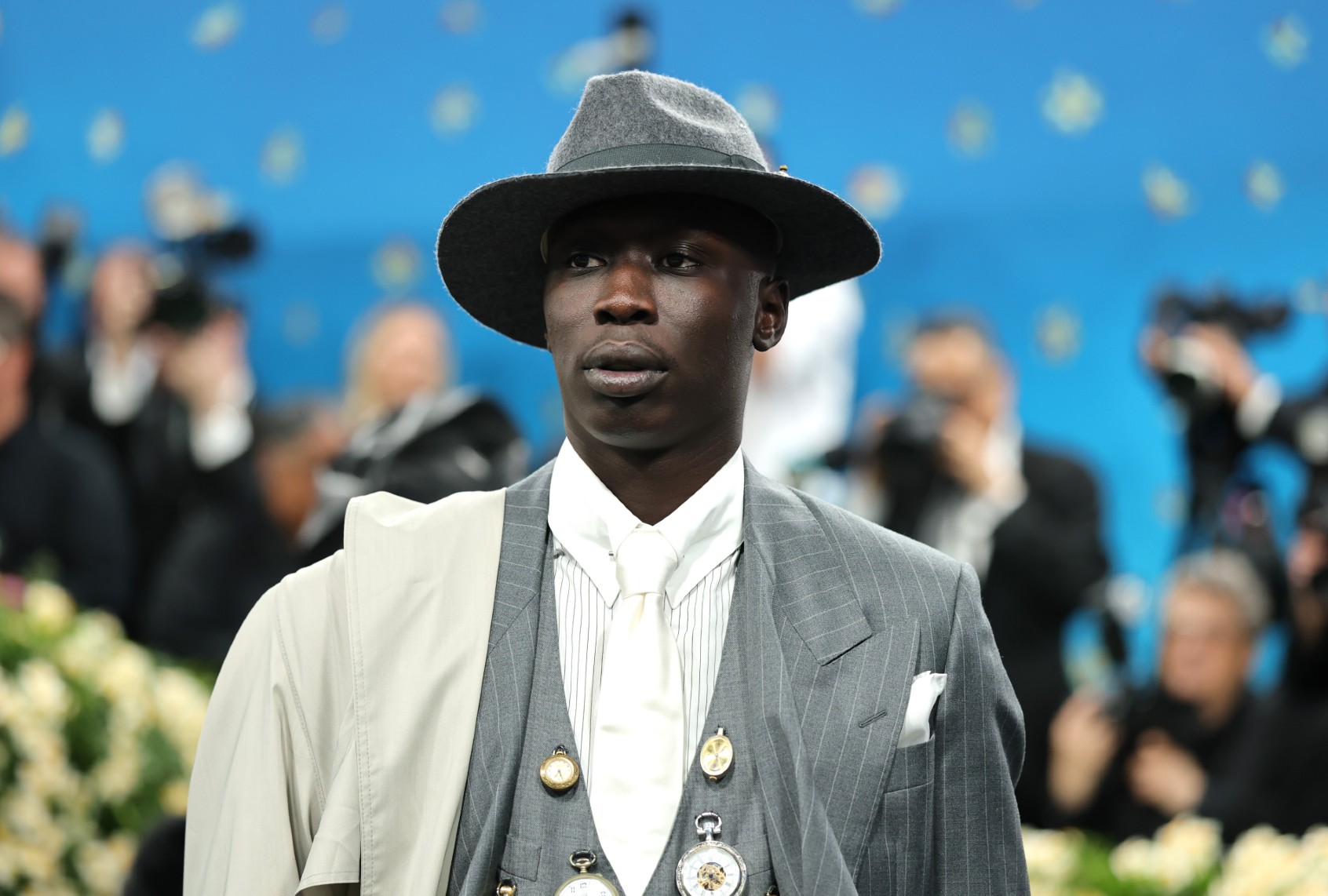 Khaby Lame attends the 2025 Met Gala Celebrating "Superfine: Tailoring Black Style" at Metropolitan Museum of Art on May 05, 2025 in New York City. (Dia Dipasupil/Getty Images)This year’s Met Gala may read tone deaf and myopic to some, and in some ways, it is. But it signifies persistent hope and approaching change. Christian Latchman, the young model who is the face of “Superfine: Tailoring Black Style,” who appears on nearly all of the show’s marketing, posted a TikTok before the Gala that reminded his followers he’s still working a 9-to-5 job. That may seem baffling, but at Monday’s press preview, Miller spoke about how figures praised as Black dandy icons are “still beholden to the whims of the institution.”
Khaby Lame attends the 2025 Met Gala Celebrating "Superfine: Tailoring Black Style" at Metropolitan Museum of Art on May 05, 2025 in New York City. (Dia Dipasupil/Getty Images)This year’s Met Gala may read tone deaf and myopic to some, and in some ways, it is. But it signifies persistent hope and approaching change. Christian Latchman, the young model who is the face of “Superfine: Tailoring Black Style,” who appears on nearly all of the show’s marketing, posted a TikTok before the Gala that reminded his followers he’s still working a 9-to-5 job. That may seem baffling, but at Monday’s press preview, Miller spoke about how figures praised as Black dandy icons are “still beholden to the whims of the institution.”
With Latchman as the face of the show and the biggest night in fashion, but still hustling at a 9-to-5 while his modeling career takes off, “Superfine” can be seen as a commentary on the very establishment that allows it to exist. The Met Gala is a gatekeeping party, where the entry price is more than most people’s annual salary. In published materials commemorating this historic exhibit, Latchman’s face will be remembered for decades to come. But when October rolls around, the Costume Institute will begin moving on to the next thing. Walls come down and they are built back up again, but Latchman’s career will remain changed forever. Power may not be totally in the hands of the people, but it’s being dispersed in quantifiable amounts. To refuse to engage with the Met Gala and its companion exhibition this year is to ignore the opportunity to honor the work and persistence of Miller, Latchman and the countless number of Black dandies the show studies and celebrates. In a time when the most powerful people in the world jump to close-minded conclusions that cripple the rest of us, we owe it to ourselves, our fellow humans and to history to, at the very least, take a moment to pause and consider the nuances.
Read more
about the Met Gala
